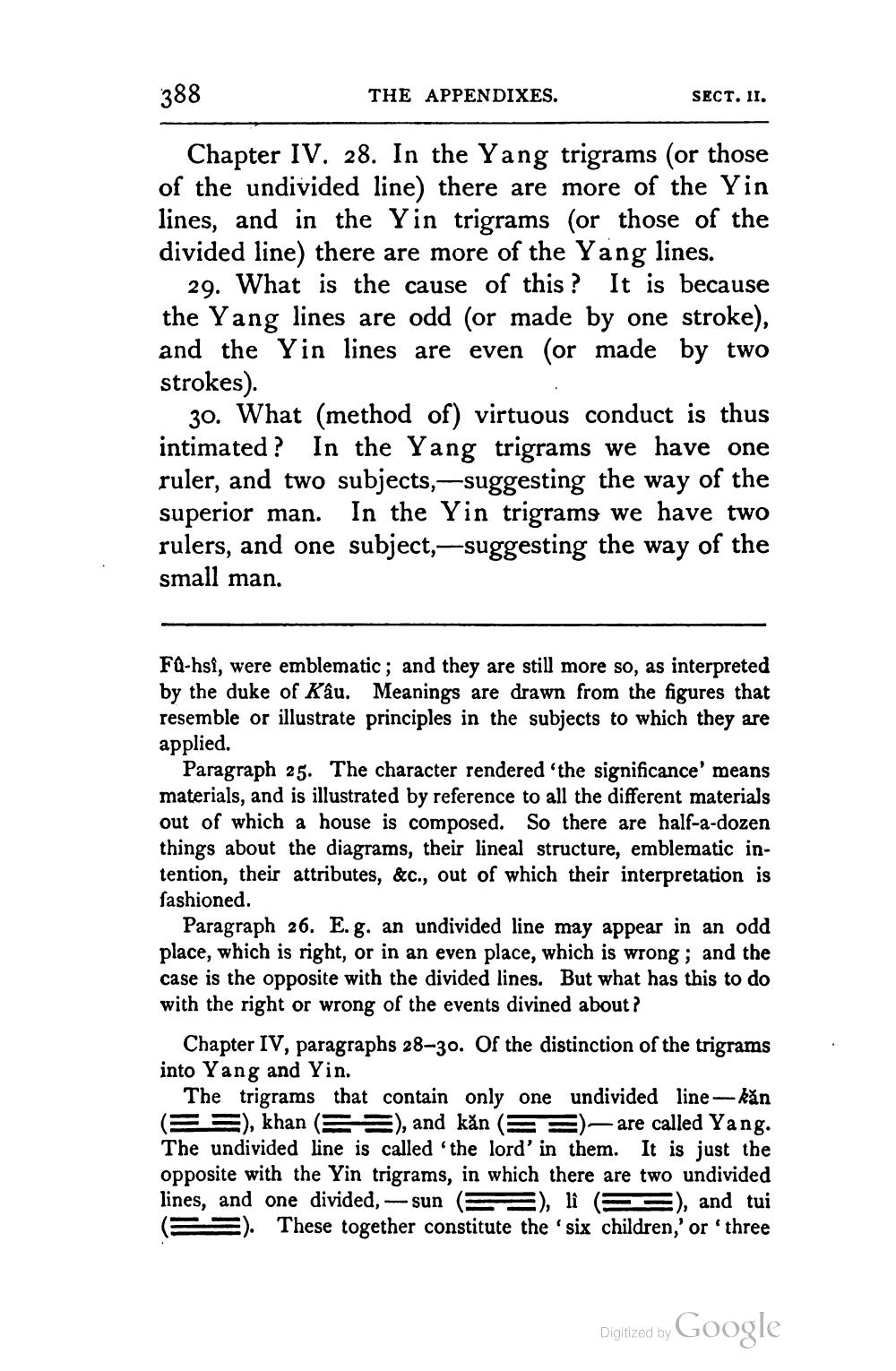________________
388
THE APPENDIXES.
SECT. II.
Chapter IV. 28. In the Yang trigrams (or those of the undivided line) there are more of the Yin lines, and in the Yin trigrams (or those of the divided line) there are more of the Yang lines.
29. What is the cause of this? It is because the Yang lines are odd (or made by one stroke), and the Yin lines are even (or made by two strokes).
30. What (method of) virtuous conduct is thus intimated ? In the Yang trigrams we have one ruler, and two subjects,-suggesting the way of the superior man. In the Yin trigrams we have two rulers, and one subject,-suggesting the way of the small man.
Fa-hsi, were emblematic; and they are still more so, as interpreted by the duke of Kâu. Meanings are drawn from the figures that resemble or illustrate principles in the subjects to which they are applied.
Paragraph 25. The character rendered 'the significance' means materials, and is illustrated by reference to all the different materials out of which a house is composed. So there are half-a-dozen things about the diagrams, their lineal structure, emblematic intention, their attributes, &c., out of which their interpretation is fashioned.
Paragraph 26. E. g. an undivided line may appear in an odd place, which is right, or in an even place, which is wrong; and the case is the opposite with the divided lines. But what has this to do with the right or wrong of the events divined about?
Chapter IV, paragraphs 28–30. Of the distinction of the trigrams into Yang and Yin.
The trigrams that contain only one undivided line - kăn E E ), khan ( BE ), and kăn (
E E )—are called Yang. The undivided line is called the lord' in them. It is just the opposite with the Yin trigrams, in which there are two undivided lines, and one divided, -sun (
B E ), li (
E E ), and tui ( E S ). These together constitute the 'six children,' or 'three
Digitized by Google




